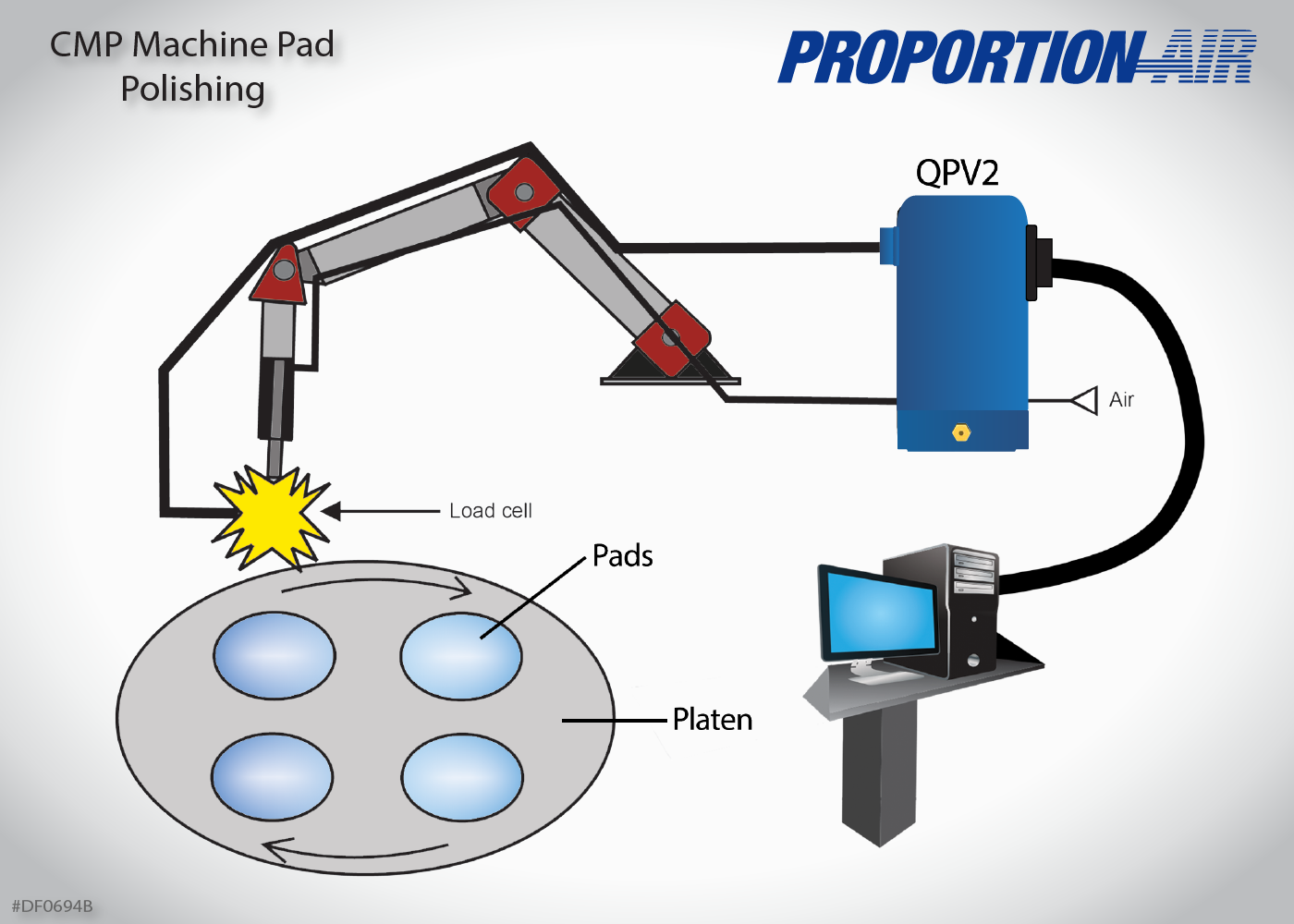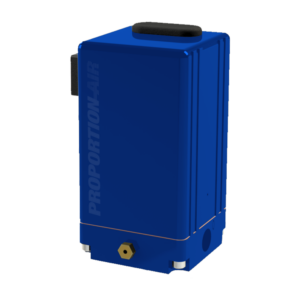
In the semiconductor industry, a process known as Chemical Mechanical Planarization (CMP) is used to polish wafers. These wafers are used in hard drives and other components to store and retrieve information. CMP machine pad polishing is a critical step in producing high quality wafers. This process is designed to remove excess materials and create a smooth surface.
During the process, semiconductor wafers are ground and polished to a high mirror finish. Many different types of pads can be used to create the desired surface on the wafer. Each pad must provide consistent and repeatable force during the entire polishing process. If the pad is not perfectly flat, the wafer polished will not meet specification. It is an extremely expensive process to produce these wafers.
Typically low or no friction cylinders are used for the finest control of force. The QPV2 electronic control valve controls force on the polishing cylinders, using a load cell for feedback. Resolution of ±0.005% of full-scale calibration allows for minute changes in force. Repeatability of ±0.02% of full scale ensures that the same force is generated with the same command signal all the time. The analog monitor signal output from downstream pressure is available on the main electrical connector of the QPV2 and can be used for constant data acquisition, ensuring proper operation or diagnosing issues.
Proportion-Air’s QB2 proportional valve is also a viable solution if high resolution performance is not necessary. The QB2 is also able to collect and send analog output back to the PLC or controller for data acquisition.
Learn more about our semiconductor applications.
Products used in this application:
-

QPV High Resolution Pressure Regulator
$811.00 – $939.00 Select options This product has multiple variants. The options may be chosen on the product page
